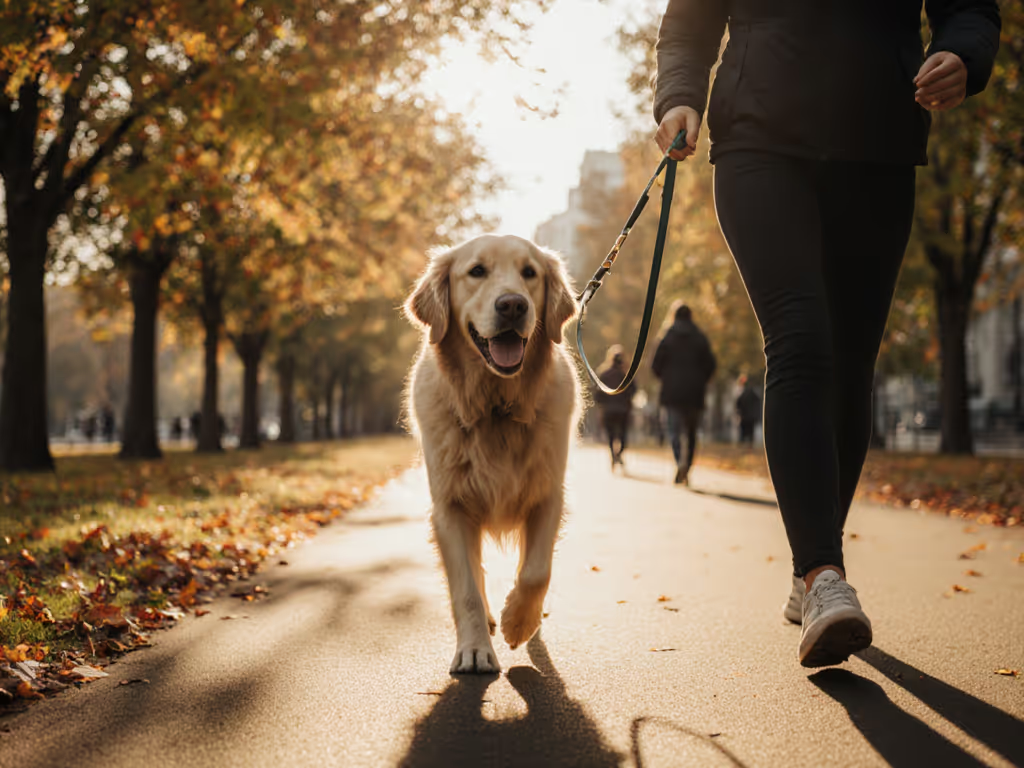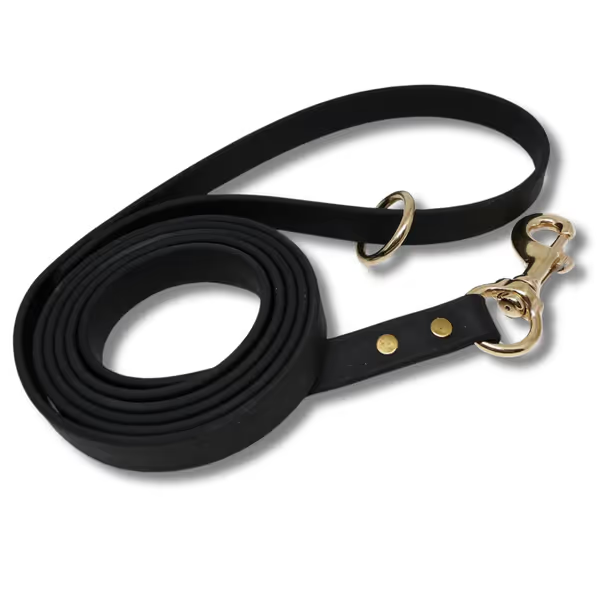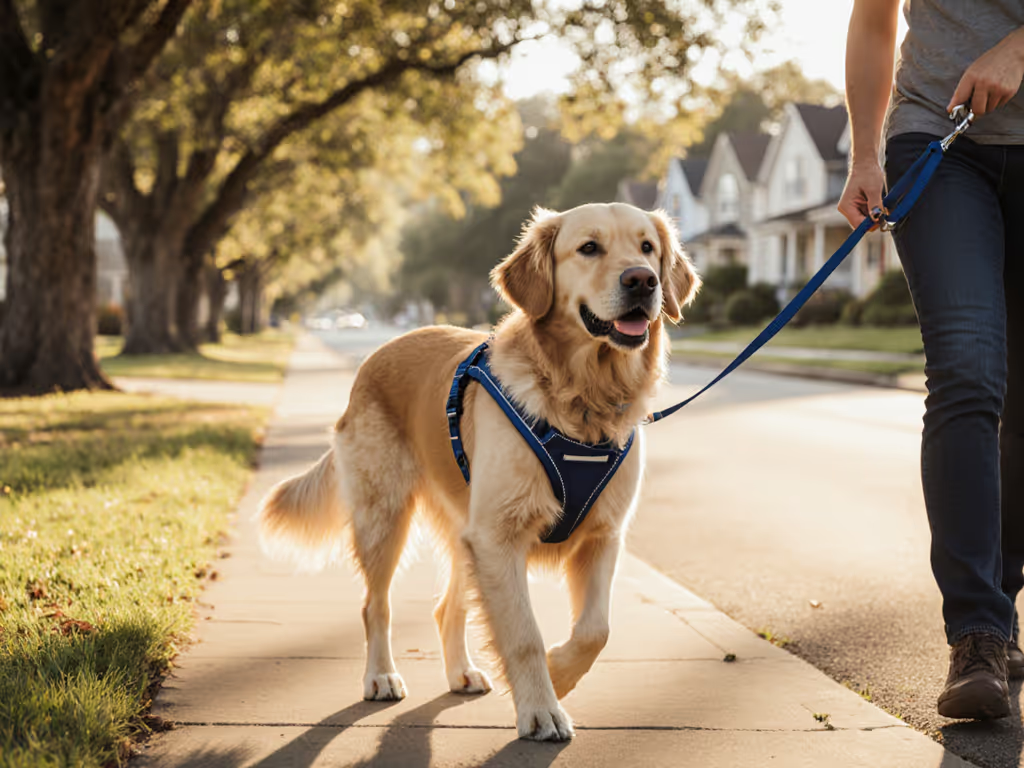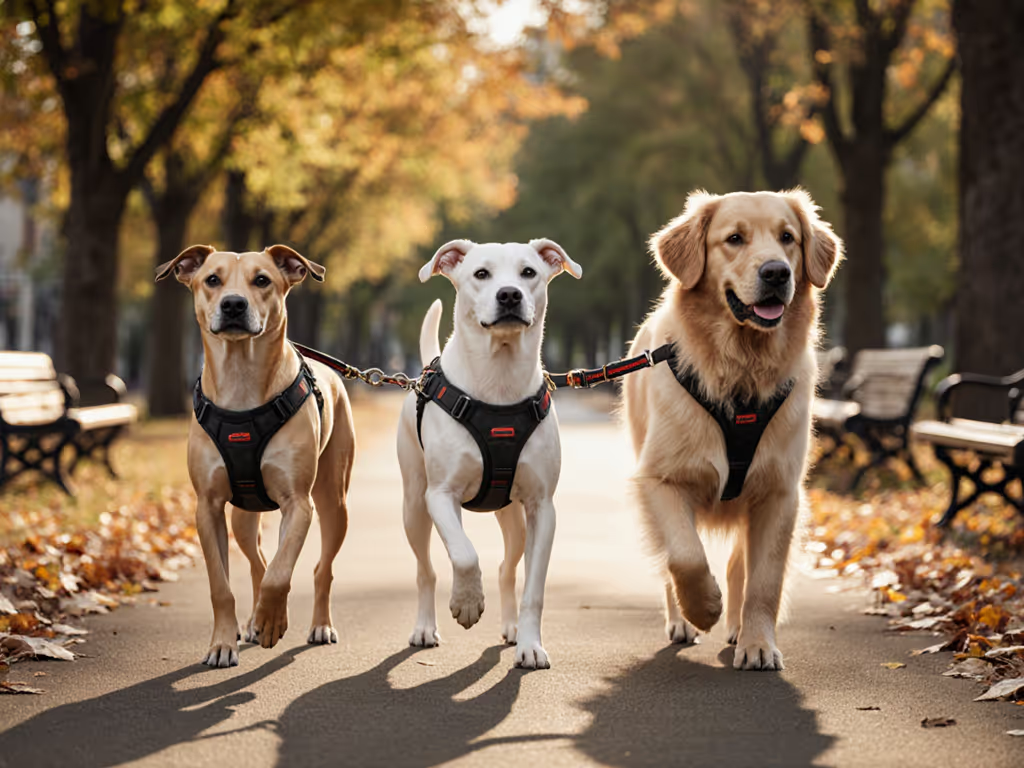
Gummy Leash Training: Master Loose-Leash Walking

Have you ever felt like your walks have turned into a tug-of-war match rather than the peaceful bonding time you envisioned? You're not alone. The gentle approach of gummy training leash techniques combined with thoughtful flexible leash training principles can transform those frantic pulls into calm companionship. This isn't about quick fixes or expensive gadgets: it's about building something sustainable that respects both your time and your dog's learning process. In my years designing stage-based training progressions, I've found that the most effective leash work happens when we prioritize partnership over power. When we make room for gentle redirections and celebrate tiny victories, something remarkable happens: both ends of the leash begin to relax.
Why Traditional Leash Methods Leave Us Feeling Stuck
Many guardians come to me exhausted after trying every "solution" under the sun, from yanking techniques to restrictive harnesses that create more anxiety. If you're debating harness styles, our front-clip vs back-clip harness comparison shows which setups help reduce pulling for different breeds and body types. What they don't realize is that every time your dog pulls against resistance, they're being reinforced by moving toward what they want. It's physics, not defiance. And when we respond with frustration or force, we accidentally teach our dogs to tune us out in stressful situations.
Consider Maria's situation: a professional with a rescue terrier mix who'd never learned leash manners. She'd invested in expensive "no-pull" gear but still arrived home physically and emotionally drained after each walk. We didn't need more equipment; she needed a different approach that honored her limited 15-minute practice windows and her dog's need for clear, positive guidance.
Small wins, stacked safely, build calm, confident teams.
Building Your Foundation: Gentle Principles for Real Results
Before we even clip on a leash, let's establish three non-negotiable foundations for your training journey:
-
Handler Posture Cues: Stand with feet shoulder-width apart, shoulders relaxed down, and leash hand resting gently at your hip (not clutched to your chest). This stance communicates calm leadership rather than tension.
-
Your Threshold Awareness: Identify your personal stress point (e.g., 3 feet of pulling) and commit to responding before you reach it. This is your early intervention window.
-
The 3-Second Rule: Whenever your dog offers a moment of slack leash, even accidentally, mark it with a "yes!" and deliver a treat within three seconds. This builds the connection between loose leash and good things. Choosing high-value training treats that are the right size and texture will speed up those reps.
These gentle directives create the framework for all subsequent training. Remember, calm, consistent reps create confidence for both ends of the leash. Your dog isn't "testing" you; they're simply responding to what's been reinforced.
Stage-Based Progression: From Hallway to Home Street
Stage 1: The 3-Foot Threshold (Home Practice)
Start in the smallest possible space (a hallway or between two chairs 3 feet apart). Practice these steps:
- Clip on your leash and simply stand still for 10 seconds (use a timer)
- If your dog stays within 3 feet, mark and treat
- Gradually increase stillness time to 30 seconds
- Once consistent, add one small step forward while maintaining the 3-foot bubble
Progression checklist: Can you complete 5 one-step moves with 80% loose leash? Move to Stage 2.
Stage 2: The 6-Foot Threshold (Living Room Practice)
Expand your space to 6 feet of movement capacity:
- Practice "red light/green light" walking: 3 steps forward, 3 seconds pause
- Use a gentle turn cue like "this way" to redirect attention
- If leash tightens, stop immediately and wait for slack
Stress-reduction tip: Place treats on the floor during pauses to encourage nose-down, relaxed posture.
Stage 3: Front Door Integration
This is where many guardians get stuck: transitioning from interior calm to exterior excitement. Try this:
- Practice all previous stages within 2 feet of the closed front door
- Add 15 seconds of door-sitting before opening
- Open the door just 6 inches, and close immediately if the leash tightens
- Reward calm behavior through progressively wider openings

Gummy Biothane Training Leash
Understanding the Right Tool for Your Journey
When considering equipment, look for what supports your training philosophy, not what promises to "fix" your dog. The gummy leash techniques I teach work exceptionally well with a shock-absorbing dog leash that has just enough give to prevent harsh jolts when your dog makes a mistake. Not sure where to start? Our best training leashes by body type breaks down options for different dogs and walking goals. This isn't about punishment: it's about creating a comfortable training leash experience that reduces the physical stress of sudden movements for both of you.
For reactive dogs needing extra support, pairing a leash for reactive dogs with these techniques provides the buffer zone needed for successful redirection. If a head collar is part of your plan, read our Gentle Leader review with fitting and transition tips to use it humanely and effectively. The key is finding gear that complements your gentle approach rather than fighting against it. Remember our goal isn't to restrain but to guide.
Real-World Practice: Making It Fit Your Life
I know you're time-constrained. That's why my clients succeed with these micro-practices:
- The 3-Minute Threshold Drill: Before each real walk, practice 3 minutes of perfect leash manners in your driveway or hallway
- Context Shifts: Practice walking near (but not through) your regular door exit point to build threshold awareness
- Distraction Laddering: Start practicing with minimal distractions (inside), then add one small challenge at a time (open window, then front door ajar) For a structured progression through real-life distractions, see our distraction training guide.
Last week, one client finally experienced that breakthrough moment in her tiny apartment hallway, after weeks of 3-minute practice sessions, her dog completed a calm, ten-step walk to the door without pulling. The next day, she successfully took it outside for one block. This isn't magic; it's methodical progress.
Your Actionable First Step
Choose just one stage that matches your current reality and practice it for three minutes, twice daily, for the next week. When your dog offers that elusive moment of loose leash, however brief, celebrate it like it's the Olympics. Because for your partnership, it is.
I'll leave you with what I tell every new client: Teams learn together. Your dog isn't failing your training; they're showing you what they need next. When we honor those small moments of progress, we're not just teaching leash manners: we're building trust that extends far beyond the walk.
Next time you clip on that leash, remember: you're not just heading out for exercise. You're creating moments of connection, one gentle step at a time.
Related Articles


Humane Alternatives to Choke Chain Training
Learn the welfare risks of choke and prong collars and choose humane, science-backed alternatives like no-pull harnesses, martingales, head halters, and flat collars. Get practical fitting tips and positive reinforcement steps to reduce pulling, protect neck health, and strengthen the owner–dog bond.


Best Dog Collar for Training: Anatomy-Safe Guide
Choose training gear by your dog’s anatomy, using practical measurement thresholds and fit checkpoints to prevent tracheal pressure and chafing. Get clear guidance on when to use a Y-harness, flat collar, or martingale - and how to adjust each - for humane, effective leash work.
